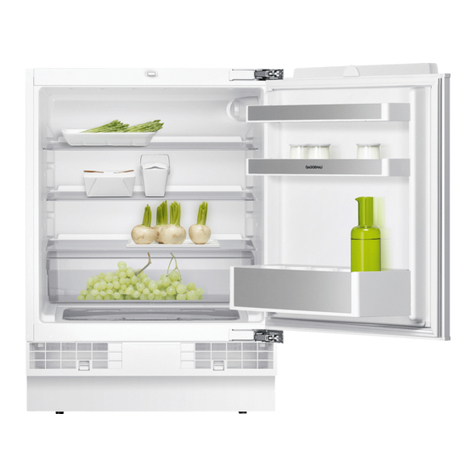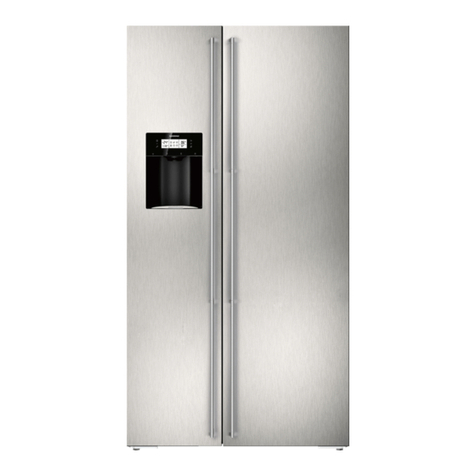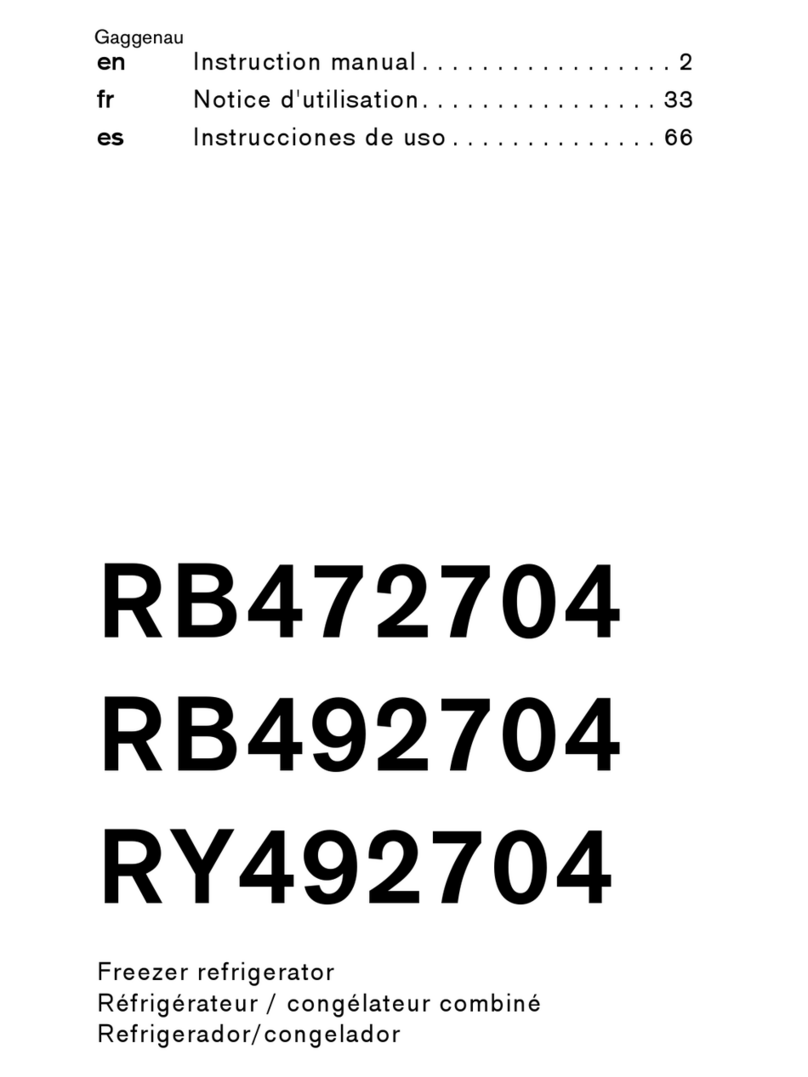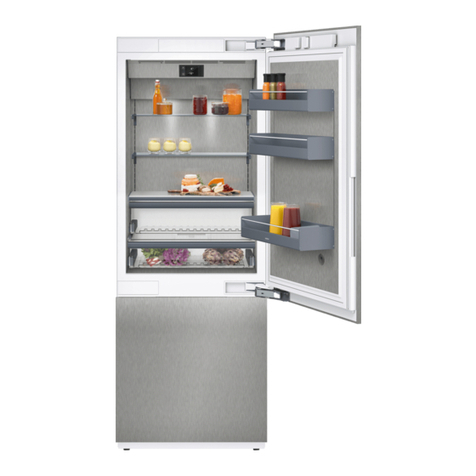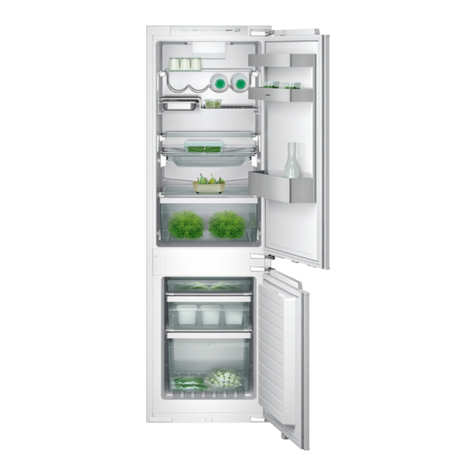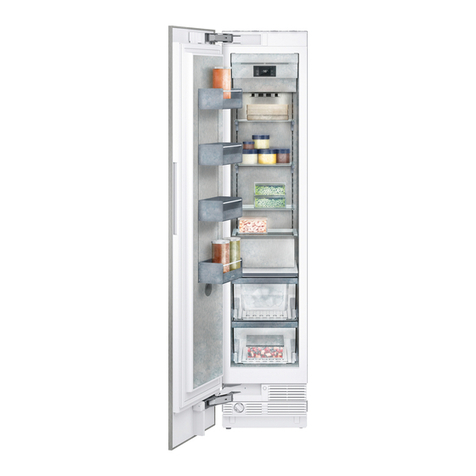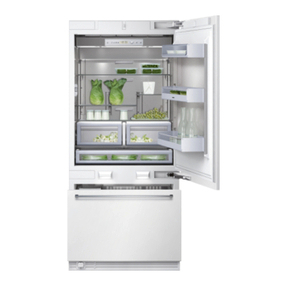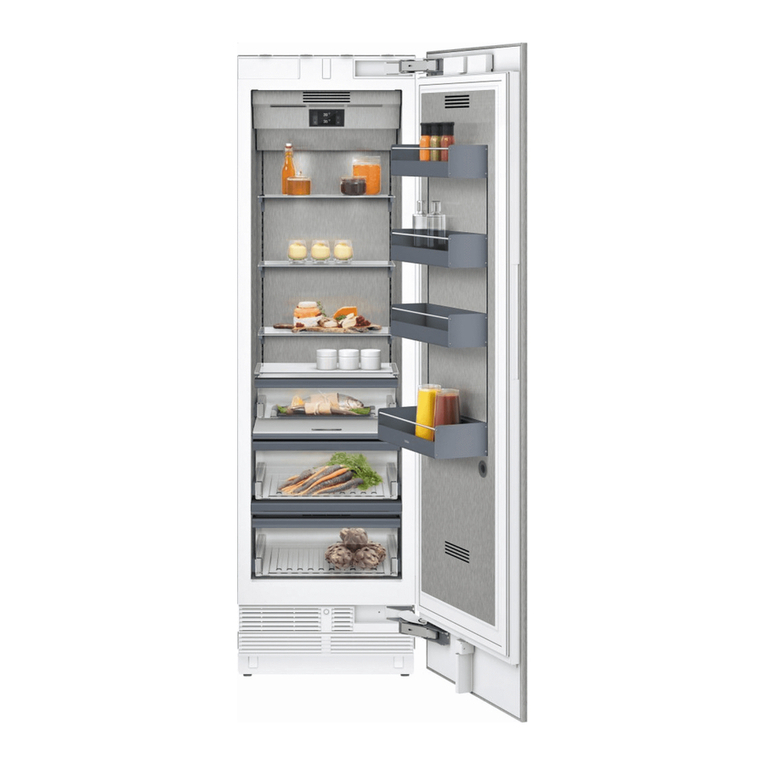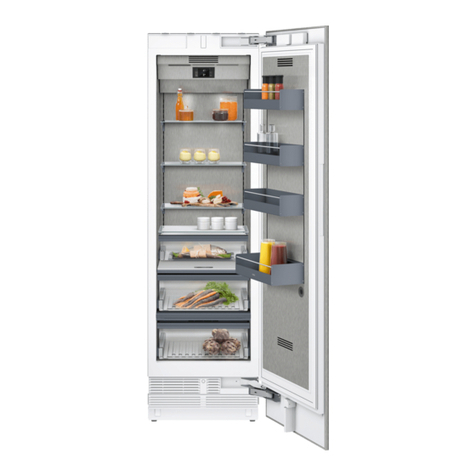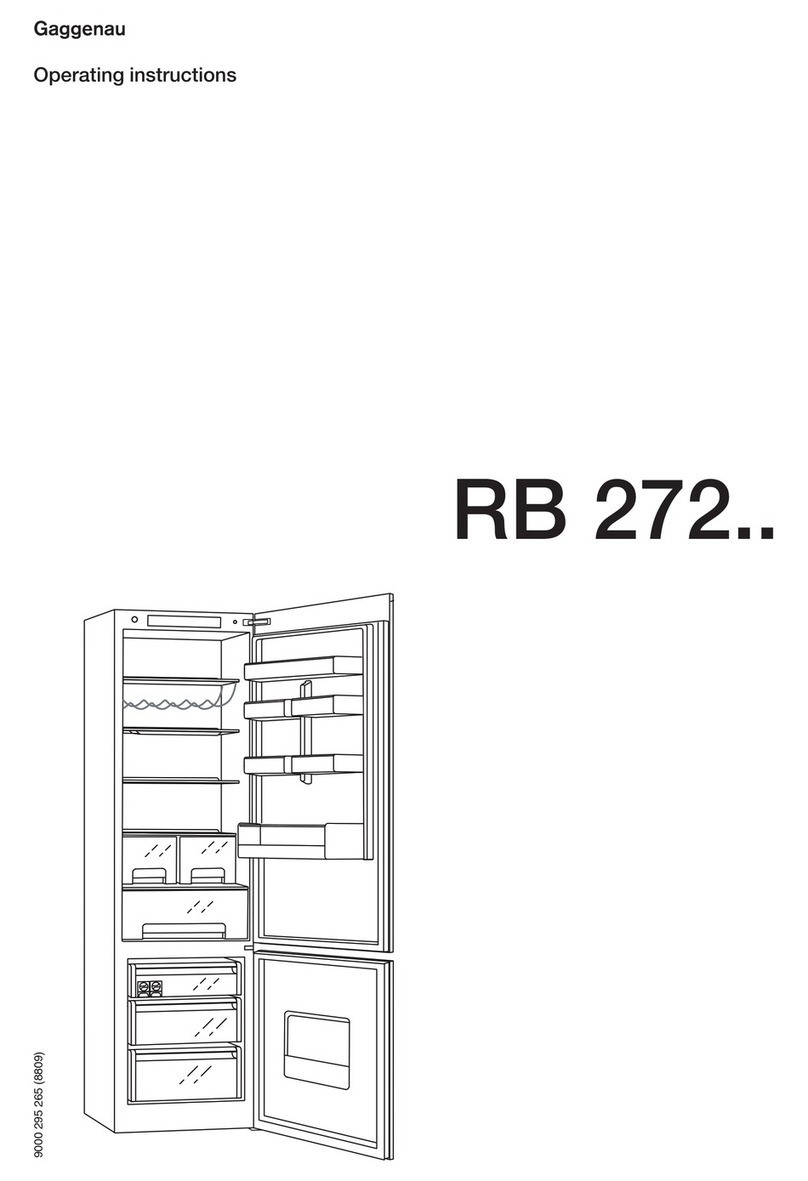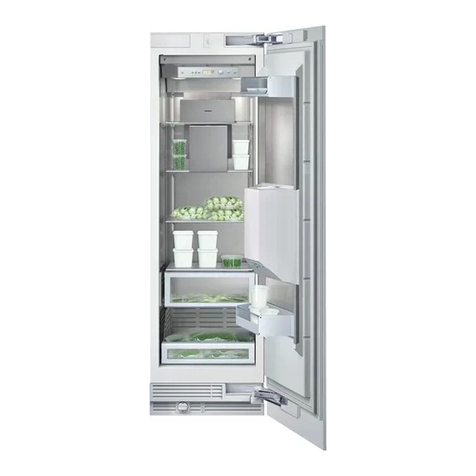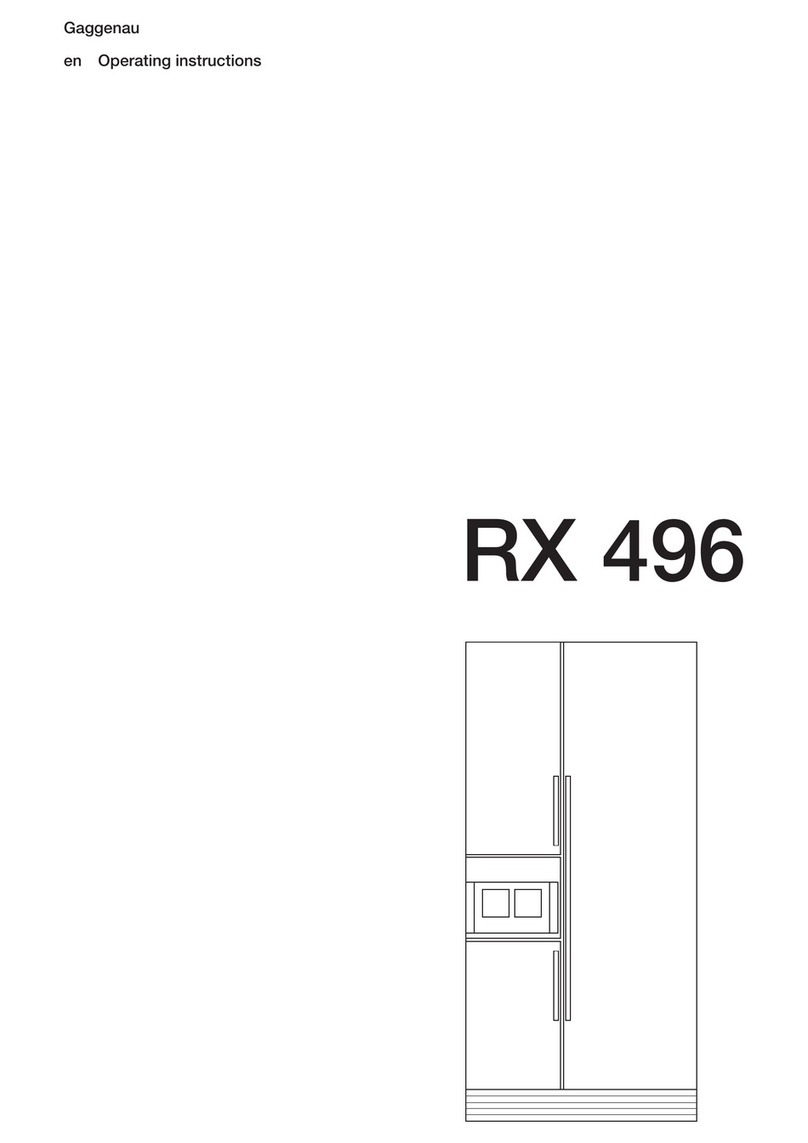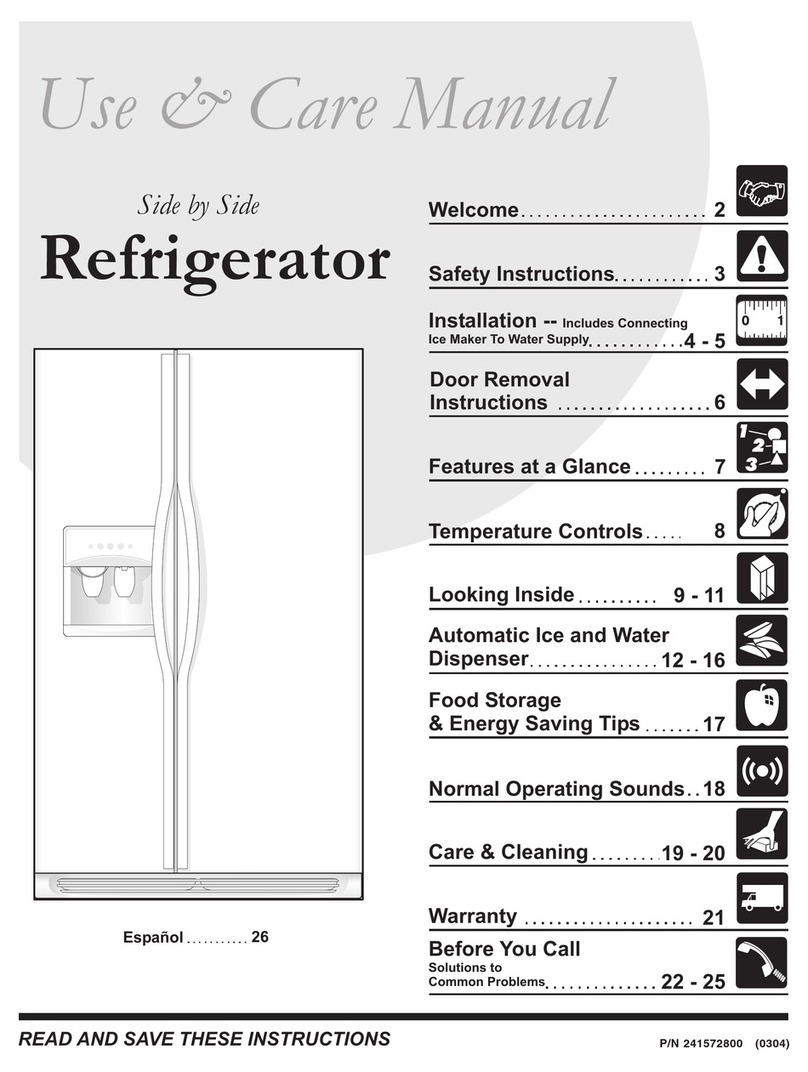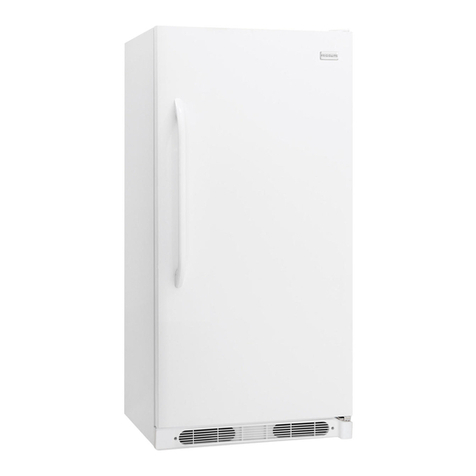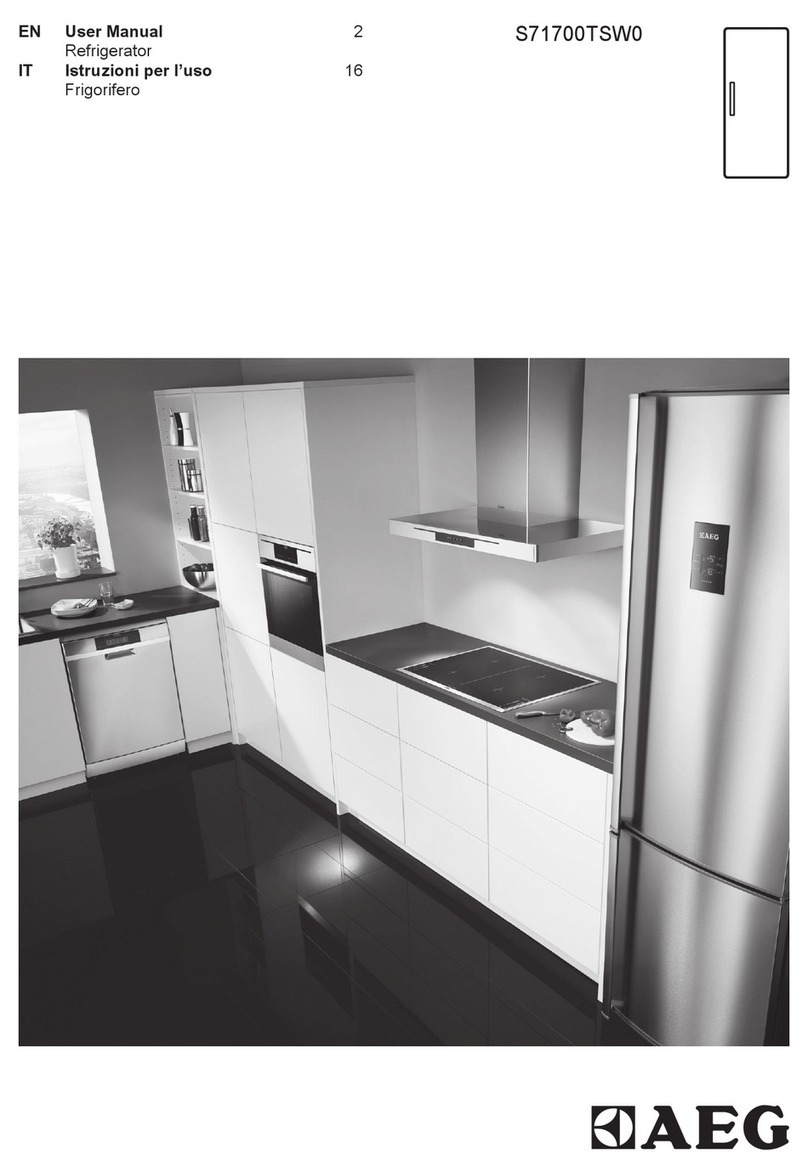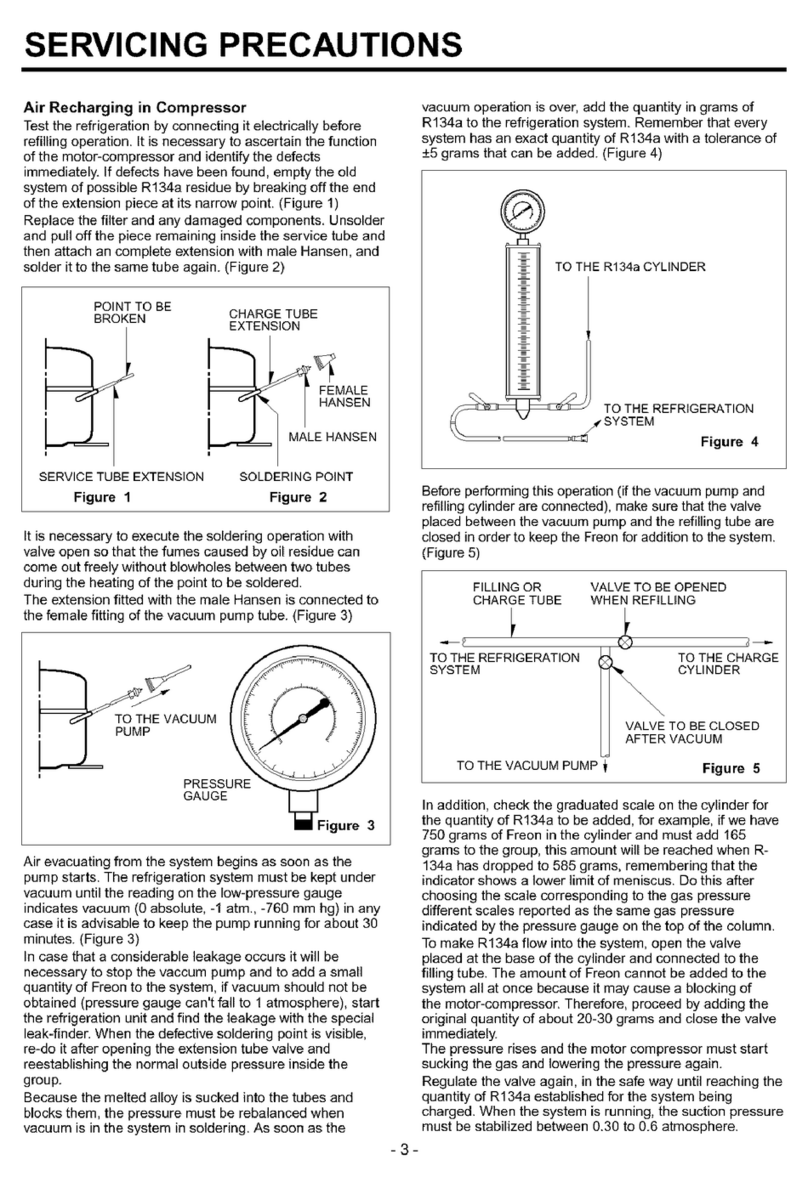
6
Installing the appliance
Installation location
ãCaution:
The appliance is very heavy. Data relating to the
weight when empty is found in the following table:
The appliance should be installed in a dry, well
ventilated space.
The location should not be exposed to the direct
sunlight and should not lie next to a source of heat such
as a cooker or a radiator etc. If installation next to a
source of heat cannot be avoided, either a suitable
insulating plate should be used or you should keep to
the following minimum distances:
– 3 cm to electric or gas cookers.
– 30 cm to an oil-fired or solid-fuel cooker.
The floor of the installation location must not give way;
if required, reinforce floor. To ensure that the ice maker
functions correctly, the appliance must be upright.
Atmosphere grades
The climate class can be found on the rating plate.
The climate class indicates within which ambient
temperatures the appliance can be operated.
Stable installation
The appliance is very heavy and has a tendency to tilt
forwards when the appliance door is opened.
The appliance must not be switched on until there
is no possibility of the appliance tilting over.
The safest method of installing the appliance in a stable
position is to use the supplied anti-tilt brackets.
If the installation cavity is adequately stable and the
appliance can be attached securely to the upper and
side walls of the cavity, it may be possible to dispense
with the anti-tilt brackets. A prerequisite for this is
always a firm connection between the cavity and back
wall!
In the case of doubt, the help of architect or specialist
builder should be enlisted.
Installation niche
It is important to keep to the stated dimensions of the
installation niche with a view to trouble-free fitting, and
the subsequent appearance of the kitchen furniture
frontage.
Special care should be taken that the niche has right
angles. The side walls should not exhibit areas that
stick out, projections or unevenness.
You should determine the right angles of the installation
niche with appropriate means, e.g. by measuring
diagonally and by using a spirit level.
The side walls and the upper end of the installation
niche must be at least 16 mm thick.
Neighbouring kitchen furniture
The new appliance is screwed down tightly using parts
of the cabinet and the upper cabinet.
Care should therefore be taken, that all upper cabinets
to which something has been fastened are securely
connected to the subsurface or wall by appropriate
means.
The minimum thickness of the base should be
aminimumof19mm.
Subsurface
The subsurface must be level and even in order to
ensure that the appliance is securely installed and
works correctly.
The subsurface must be made from a hard, non-flexible
material.
The floor of the installation space must have the same
height as the rest of the space.
On account of the weight of a fully-laden appliance, it is
necessary to have a bearing subsurface. In the case of
doubt, the help of architect or specialist builder should
be enlisted.
Aligning the appliance
To ensure that the appliance functions correctly, it must
be set level with a spirit level.
If the appliance is not level, water may flow out of the
ice maker, ice cubes may be irregular or the doors may
not close properly.
Appliance Weight (empty)
Fridge-Freezer combination 75,6 cm approx. 198 kg
Fridge-Freezer combination 90,3 cm approx. 251 kg
Climatic class Permitted ambient
temperature
SN +10 °C to 32 °C
N +16 °C to 32 °C
ST +16 °C to 38 °C
T +16 °C to 43 °C
